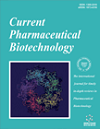-
oa Editorial [Hot Topic: Molecular Imaging in Current Pharmaceuticals (Guest Editor: Ramasamy Paulmurugan)]
- Source: Current Pharmaceutical Biotechnology, Volume 12, Issue 4, Apr 2011, p. 458 - 458
-
- 01 Apr 2011
- Previous Article
- Table of Contents
- Next Article
Abstract
Molecular imaging has been recognized as an important area of bio-medical research, mainly because of its ability to visually represent, characterize and quantify biological processes in living subjects. For instance, techniques such as Positron Emission Tomography (PET), Single-photon Emission Computed Tomography (SPECT), Magnetic Resonance Imaging (MRI), and optical imaging (Fluorescence and Bioluminescence) have been extensively used for imaging different biological pathways of cancer cells in living small animals. Molecular imaging uses non-invasive imaging techniques to detect signals that originate from molecules, often in the form of an injected tracers' interaction with a specific cellular target, or a substrate that specifically reacts with enzymes expressed in the target cells, or sometimes from the labeled protein itself, in vivo in living subjects. These techniques are capable of measuring trace amounts of radiolabeled probes or optical signal generated from the probes accumulated in the cells or signal emitted by the enzyme-substrate reactions in vivo, and quantifying the molecular kinetic processes that are under review (or being studied). This technique will then provide a wealth of information, facilitating the drug development process thus enabling therapeutic evaluation and planning. Currently, molecular imaging techniques have been combined with other biochemical assay systems to improve early diagnosis of cancers in the clinic. The importance of molecular imaging techniques is evident in the pharmaceutical industry starting from drug screening to clinical applications, as well as intermediate processes such as in vitro and pre-clinical evaluations. To highlight the importance of molecular imaging in different areas of pharmaceutical research, in addition to its proven role in biomedical research, in this issue we cover some important areas where molecular imaging plays a growing role as a research tool. After the completion of the Human Genome Project (HGP), we now have detailed knowledge of complete nucleotide sequences, as well as the number of functional genes and their importance. However, there are unsolved fundamental questions untouched by HGP. For instance, how do proteins cross talk and execute different biological functions in response to extracellular stimuli? The first few topics of the issue highlight the importance of reporter gene technologies developed for both in vitro and in vivo applications for studying protein-protein interactions. Importantly, reporter genes are now widely used for the indirect tracking of biological events both in vitro and very recently in vivo. As several imaging modalities with different levels of image resolutions and tomographic informations are currently available, the availability of multiple reporters expressed in fusion provides an important advantage. By combining the information derived from each modality, it is now possible to validate the authenticity of the biological event than with just a single reporter. To highlight the importance of fusion reporters, we next discuss the development and application of different fusion reporters. We and others have developed reporter gene-based imaging technologies to study different sub-cellular events such as protein-folding, including protein dimerizations, protein-ligand interactions, and protein- protein interactions that can serve as therapeutic targets in treating different diseases such as cancer. These assays are not only useful for imaging sub-cellular events, but can also be used for screening drugs that modulate these processes and for pre-clinical evaluation of these drugs in living animals. Several of the articles in this issue further highlight the importance of available assays and their applications for studying different sub-cellular events in living animals. Stem cell-based therapeutic approaches have recently been used for treating different diseases. In vivo monitoring of therapeutic stem cells for their movement (cell trafficking), accumulation in the targets sites and differentiation into required cell lineage are important to thoroughly evaluate their role. With PET and high resolution MR-imaging, it is now possible to track stem cells at single cell resolution in small animals and in humans. To highlight the applications of molecular imaging in cell-based therapy, in this issue we have included an extensive review that discusses the systematic method in which imaging can help in the functional evaluation of stem cell therapy. In addition to stem cell-based therapy, it is now common in the use of purified islet cells derived from the organs (Pancreas) of donors to be successfully engrafted and for patients to achieve insulin independent survival in type-1 diabetes. The β-cells' survival after engraftment was challenging and was successful only for limited periods of time. To improve the survival of engrafted β-cells, several approaches including growth factor supplementations have been attempted. Molecular imaging using MRI offers an effective method of tracking the viability of engrafted cells over time. This issue features a research article describing research on monitoring the viability of transplanted islets and insulin-secreting cells in vivo in rats by using a 3T MR scanner. In cancers and other cellular diseases, the cellular receptors not only contribute to the pathophysiology of diseases, but can also serve as ideal targets for treating these diseases. For example, in breast cancer the phenotypic pattern of this disease for the expression of different cellular receptors such as HER2, Estrogen Receptor (ER) and Progesterone Receptor (PR) are crucial for designing therapeutic strategies for treatment. To examine the importance of cellular receptors and their roles, we have manuscripts that review different cellular receptors involved in the development and the treatment of breast cancer. Finally, we have included a research article that for the first time investigated therapeutic response of Gastrointestinal Stromal Tumor (GIST) using dual energy CT. Overall, this issue highlights the importance of molecular imaging in different area of bio-pharmaceuticals, including some promising novel technologies.


